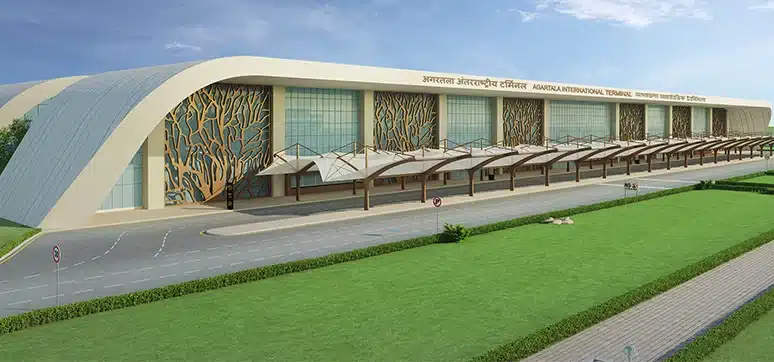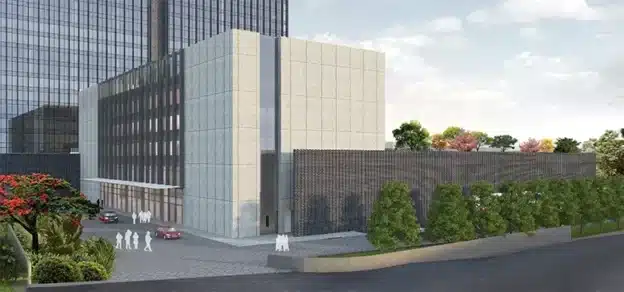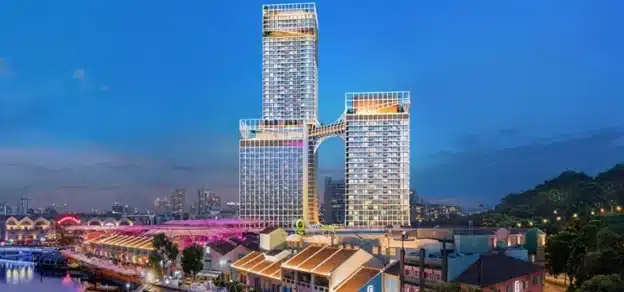Cladding of buildings is one of the most expressive, inspiring and complex aspects of building design. The basic function of an envelope or enclosure of a building or structure is to protect the covered or otherwise conditioned interior spaces from the surrounding environment.
Four Major Trends in Exterior Wall Cladding
Demand for fire-resistant, thermal resistant, and water-resistant, soundproof cladding systems is growing in the market. Innovative, eco-friendly cladding materials are preferred in the market as a consumer is becoming more environmentally concerned. Fibre cement boards, HPL (High-Pressure Laminate), kinetic façade, and perforated parametric designs are major trends in exterior wall cladding.
Most Preferred Cladding Methods
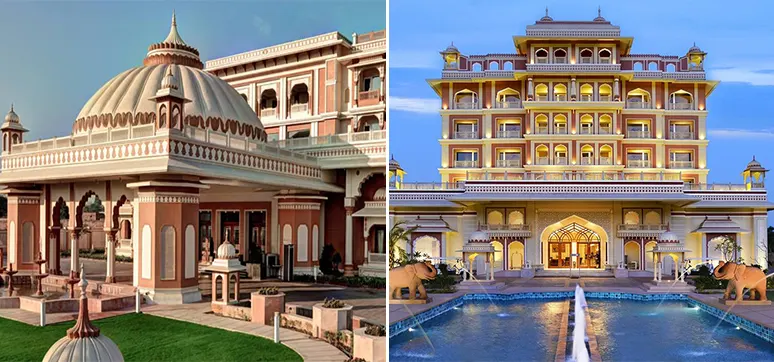
Kinetic façades are the most preferred cladding material as they can be used to manage light, air, energy, and even information and can act to reduce the solar gain as well as allow the passage of fresh air into the building, helping to alter the interior environment. The moving elements of these façades can be programmed to respond to climatic or other environmental factors, time, levels, type of occupancy and so on to improve performance and efficiency. A kinetic façade is an extension of the idea that a building’s envelope is an active system rather than just a container. Demand for such smarter and eco-friendly cladding methods is growing and consumer is becoming more environmentally concerned.
Cladding to Regulate Daylight & Ventilation

The opening design on building façades has a great influence on daylighting, solar heat gain and natural ventilation, which are closely related to the lighting and air conditioning energy consumption. The façades also contribute to enhancing a building’s thermal performance. A ventilated façade offers many advantages in energy savings, acoustic insulation, and safeguarding the building structure.
This element provides the building with a gap between its perimeter wall and the exterior cladding. Its primary purpose is to moderate the exchange of heat, air, and light that circulates between the interior and exterior of the building. The energy efficiency of the building is due to the continuous exterior insulation and the ventilated chamber, this eliminates thermal bridges due to the uninterrupted insulation throughout the base enclosure.
Intelligent and Responsive Cladding
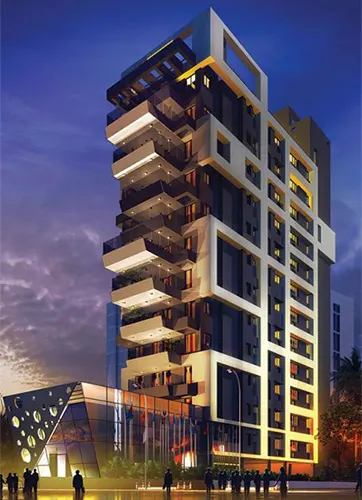
An intelligent façade is defined as the use of an energy control system that reacts to change in external conditions and has a history at least as long as the invention of the rheostat. The intelligent building skin is to optimise the buildings relative to climate, energy balance and human comfort typically based on predicative models. Kinetic façades are significantly contributing towards the reduction of energy consumption, enhancement of the building energy and environmental performance enrichment of user’s visual and thermal comfort whole ultimately, mitigating the environmental hazards. Kinetic façades are ideally sidgnificant to design and develop façades that are interactive and responsive to the environmental attributes.
These façades as a part of the intelligent façades can adjust their shapes, form, orientation or openings to automatically respond to the environmental parameters including the temperature, humidity, wind etc..
Smart Cladding Material Technologies
A façade can be considered smart when it adapts to environmental conditions and transforms itself simultaneously. This happens through its components (passive or active), which adjust to adapt to different conditions, responding to changes that occur on the outside and inside of the building. SageGlass is an electrochromic glass from Saint-Gobain. By modifying the applied stress on the glass sheet, it is possible to control its colour and consequently change the light intensities and transmitted ultraviolet and infrared radiation will have through these materials. That is, this dynamic glass allows building users to actively control natural light and solar heat gain, improving comfort and significantly reducing energy consumption.
Dynamic glass tinting is driven by an intelligent control system that uses sensors to automatically tint in response to light conditions. But you can also control the appearance from a mobile phone. It is important to mention that the main benefit is the ability to maintain contact with the outside view through the glass.
Cladding for Safety and Security of Facade
The norms and standards to be followed are the one by the Bureau of Indian Standards (BIS). Generally, the cladding material, which is selected, is based on the test and quality certificate provided by the vendors. If further quality control is required, independent labs must confirm the materials test for the physical samples.
For cladding materials, the U-factor and SHGC are important criteria, those are governed and mandated by ECBC as well. Experts conduct testing on a variety of products and cladding materials, both at the pre-construction phase for design validation and on-site. Cladding and façades are tested for air leakage, water penetration, and structural characteristics including racking.
Choosing Fire-Safe Cladding Material
Today, ensuring you select façade materials that meet fire resistance standards is crucial. This is because façade-spread is one of the fastest ways in which a fire travels through buildings. The properties of the system and materials utilised in the construction are vital to prevent the spread of fire.
Cladding Materials for Future Facades
Kinematic façades are the future. They are dynamic and adaptive and can be made up of materials such as exterior grade laminates. They can be sun-shading systems based on the elastic kinematic principle.
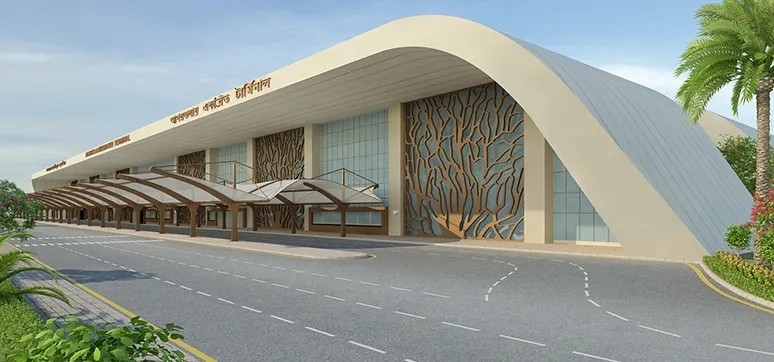
Architects and engineers need to consider many issues when working with envelope designs, including environmental issues, aesthetic appearance, occupant comfort, and view; these aspects make the envelope a multi-functional component, thus the integration approach is the optimal method to address envelope design. In the last `decade we have witnessed the inclusion of the kinetic envelope in many typologies of buildings. Many scholars believe the kinetic envelope improves the environmental performance of the building.
A kinetic façade is one that changes dynamically rather than being static or fixed, allowing movement to occur on a building’s surface. This helps to create what the architect Buckminster Fuller called a ‘skin-like articulation’ effect and is an extension of the idea that a building’s envelope is an active system rather than just a container. The moving elements of the façade can be programmed to respond to climatic or other environmental factors, time, levels and type of occupancy and so on to improve performance and efficiency. With advances in sensors, materials and building management technology, designers are increasingly able to consider kinetic components as design solutions.
The Following Tests are Performed on Cladding Materials:
- AAMA 501.1-17 – Standard test method for water penetration of windows, curtain walls and doors using dynamic pressure
- AAMA 501.5 – Test method for thermal cycling of exterior walls
- AAMA 508 – The test is to evaluate the ability of the wall cavity to achieve pressure-equalisation with the exterior
- AMA 509 – Test and classification method for drained and back ventilated rain screen wall cladding systems
To ensure cladding material is fire resistant test is done. The following are the steps of the test done:
- Step. The sample is received along with detailed drawings of the system.
- Step. Before and during the Installation, evidence is gathered to correlate the sample submitted with the drawings.
- Step. Samples are carefully installed onto a frame representing the standard conditions.
- Step. The system is loaded with thermo-couples and sensors which will help capture changes in temperature and other parameters to be recorded.
- Step. The furnace is fired up. It is designed to simulate the increase in temperature and pressure as it would progress in case of a real fire
- Step. The test sample is carefully monitored throughout the test for various parameters like changes in deflection of structure, rate of change of temperature, the behaviour of the material, the release of gases, etc.
- Step. The test ends in confirming the fire rating of the Curtain Wall System in minutes till which the system could withstand a real fire. (Example 120 minutes of fire rating)
- Step. A test report is compiled and issued capturing the behaviour of the system during the test as per the test standard.
The above is a product level quality check and is the starting point to prove compliance with future performance of the product or systems in a given environment. Testing with many combinations of systems, materials and environments may be necessary before the design can be claimed to perform as per desired expectations in unique environments
